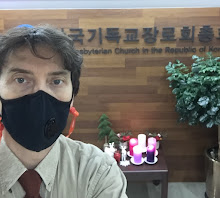 |
She was born and grew up in Cheorwon, and still lives there. When she was a child, her father was a soldier in the South Korean army. If war broke out, she explained, Cheorwon would need to hold out for ten minutes, which was the time it would take for troops from the southern provinces to arrive. For several weeks of every year, she remembers her father not being able to come back home because of military training, even though the country was not technically at war.
When she was growing up, it took her a long time to realize why the Korean War broke out and why the Korean Peninsula was split in two. The US and Soviet Union ruled South and North Korea respectively, and for their own benefit, not because North Korea was a devil, as she had been taught. In the living room of her house, she told us, there was a picture with the phrase, "Let's put a gun to the chest of the North Korean monster." She has heard that every state in America except Hawaii has arms companies, and she reflected that “you need a war to sell those weapons and make money.”
Even now, after she has gotten married and has a baby, her father continues to work in the army. As she says: “He is working for peace in national defence, and I am working for peace at the Border Peace School.”
At first she was worried about war for the sake of her baby, but now she finds peace by working at the Border Peace School. She spoke for many Koreans when she said, “We dream of peaceful reunification through a peace agreement.” Speaking specifically of her own experience she reflected that “strangely, just practicing peace makes me feel as if I am living in peace.”
She went on to say that some people wish for unification on the Korean Peninsula to earn money, others to visit their families, and to go home. Some people, she noted, really do believe that the only way to do peace work is with the mentality of “my way or the highway.” The problem is, she explained to us, is that “when many different people think many different thoughts and they move in the same direction, that's a movement. But when many different people think one thought, and they move in the same direction, that's a cult.” She concluded her reflection with the thought that “when you treat potential allies like enemies, you're behaving like a cult, not the peace movement.”
Her words were very powerful for us, and so was our view from the mountain. Looking out on that day over the wide landscape from Soi-san, from the rice fields of Cheorwon to the Pyonggang Plateau, everything seemed so quiet and peaceful, yet this is the most highly militarized region on the face of the planet. Everything may seem perfectly calm on the surface, but underneath the unresolved cold war conflict between North and South deeply affects every aspect of the everyday lives of all people in Korea, on both sides of the border.
There are, we were told, approximately 1200 steps to the top of Soi-san, and we were invited to walk up the hill in silence while praying for peace on the Korean Peninsula. I invite you into that prayer as well, remembering how it affects all of us on the planet.





Comments
Post a Comment